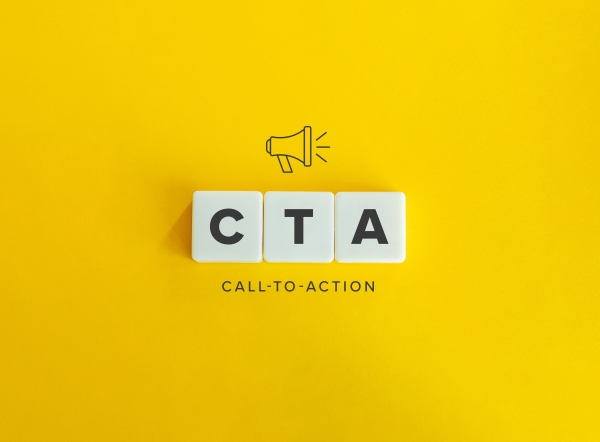
How to Create Call-to-Actions That Drive Results in Digital Marketing
Call-to-actions are a crucial element in digital marketing, as they encourage visitors to take a desired action on a website, landing page, or other online platform. Effective CTAs have the power to convert mere browsers into leads, customers, or even loyal brand advocates. By incorporating best practices and continually testing different variations, marketers can optimise their CTAs to maximise their impact and drive meaningful results. Whether it’s boosting newsletter subscriptions, generating sales, or increasing engagement on social media, well-crafted CTAs can significantly enhance the success of digital marketing campaigns.
Understanding Your Audience
Before you can create an effective CTA, you need to understand who your target audience is. Knowing your audience’s demographics, interests, and behaviours can help you tailor your CTA to their specific needs and preferences. For example, if your target audience is young professionals, your CTA might focus on the convenience and efficiency of your product or service. On the other hand, if your audience is families with small children, your CTA might emphasise safety and value.
It’s also important to understand your audience’s pain points and challenges. What problems do they face that your product or service can solve? By addressing these pain points, you can show your audience that you understand their struggles and that your offering can help alleviate them. For instance, if your audience is struggling with time management, your CTA might highlight how your product can save them time and increase their productivity.
Elements of a Strong CTA
The language used should be simple, direct, and easy to understand. Avoid using jargon or technical terms that might confuse your audience. Instead, use straightforward language that clearly communicates what action you want them to take. For example, “Sign up now” or “Get started today” are effective CTAs that leave no room for confusion.
Another critical aspect of a strong CTA is relevant messaging aligned with your brand. Your CTA should align with your overall brand messaging and tone. If your brand voice is playful and light-hearted, you should reflect that. If your brand voice is professional and formal, your CTA should match that tone. Consistency in messaging helps build trust and credibility with your audience.
More and more people are accessing websites and content on their smartphones, so it’s essential that your CTA is optimised for mobile. Use large, clickable buttons, and ensure that your CTA is prominently displayed on the screen. This will make it easier for people to take action, regardless of the device they’re using.
Tips for Testing CTAs
A/B testing is a crucial step in optimising your CTAs. It allows you to compare two versions of a CTA and determine which one performs better. This process involves randomly splitting your traffic between the two versions and measuring the response rate. By doing so, you can identify which elements of your CTA are most effective and make data-driven decisions to improve its performance.
There are several variables you can test when optimising your CTAs. These include colour, size, shape, placement, copy, and more. For example, you might test whether a red button or a green button performs better, or whether a larger or smaller button size leads to higher conversion rates. Additionally, you can experiment with different shapes, such as squares or circles, and varying levels of padding or border-radius.
Placement is another important variable to test. You might try placing your CTA above the fold, below the fold, or in the middle of the page. Similarly, you can experiment with different copy styles, such as bold, italic, or underlined text. Finally, consider testing different versions of your CTA copy to see which one resonates most effectively with your audience.
Best Practices for CTA Placement
Placing CTAs above the fold is a widely adopted practice as it ensures maximum visibility and prominence. This means positioning the CTA in the upper half of the webpage, ideally within the first screen length, so that it catches the visitor’s attention immediately. Anchor text and buttons are equally important, as they provide a clear indication of what the CTA does and help visitors understand the next steps.
Negative space refers to the empty space surrounding the CTA, while whitespace refers to the empty space within the CTA itself. Both elements help to create visual breathing room and draw attention to the CTA. However, it’s important to strike a balance between making the CTA noticeable and not overwhelming the visitor with too much blank space.
Lastly, it’s essential to ensure that CTAs don’t come across as too pushy or aggressive. Visitors should feel encouraged to take action, but not pressured or manipulated. To achieve this, maintain a clean and minimalistic design, avoid using excessive pop-ups or animations, and ensure that the CTA copy is clear, concise, and respectful.
Different Types of CTAs
There are various types of calls-to-action (CTAs) that serve different purposes, depending on your marketing goals. Lead generation CTAs aim to capture potential customer information, such as email addresses, in exchange for valuable resources like newsletters, eBooks, or webinar registrations. Sales-focused CTAs, on the other hand, prompt visitors to take immediate action towards making a purchase, like demo requests, product sign-ups, or buying directly.
Retargeting CTAs are designed to re-engage users who have previously interacted with your brand, such as abandoning a shopping cart or visiting a specific product page. These CTAs encourage users to complete their intended actions, often with personalised offers or incentives. Social media CTAs invite visitors to connect with your brand on various platforms, increasing brand awareness and reach. Examples include “Follow us on Twitter” or “Share this blog post on LinkedIn.”
Personalisation and Segmentation
Personalisation and segmentation are powerful techniques that can help maximise the effectiveness of calls-to-action (CTAs). By leveraging user data and behaviour, businesses can create personalised CTAs that resonate with individual users and speak directly to their interests or needs. For instance, a travel company might display a CTA that says “Book your dream vacation now!” to a user who has been browsing tropical destinations, while showing a CTA that says “Explore our latest deals!” to a user who has been searching for discounts.
Segmentation involves dividing a target audience into smaller groups based on shared characteristics, such as demographics, interests, or behaviours. Businesses can then create CTAs that are tailored to each group’s unique needs and preferences. For example, a fashion retailer might create separate CTAs for men and women, each featuring products and designs that appeal to their respective audiences.
Dynamic CTAs take personalisation and segmentation a step further by changing in real-time based on user interactions. For instance, a CTA that displays a countdown timer or a limited-time offer can create a sense of urgency and encourage users to take action before the deadline expires. Alternatively, a CTA that changes colour, font, or layout based on user scrolling patterns or mouse movements can grab attention and make the CTA more noticeable. By using dynamic CTAs, businesses can create a more engaging and interactive user experience that drives conversions and improves overall ROI.
By implementing effective CTAs, businesses can not only boost conversions but also improve user engagement, build brand loyalty, and ultimately drive growth. So, start experimenting with different CTA designs, personalisation tactics, and segmentation strategies today to see what works best for your business. Remember, the key to success lies in continuous testing and knowing your audience.







